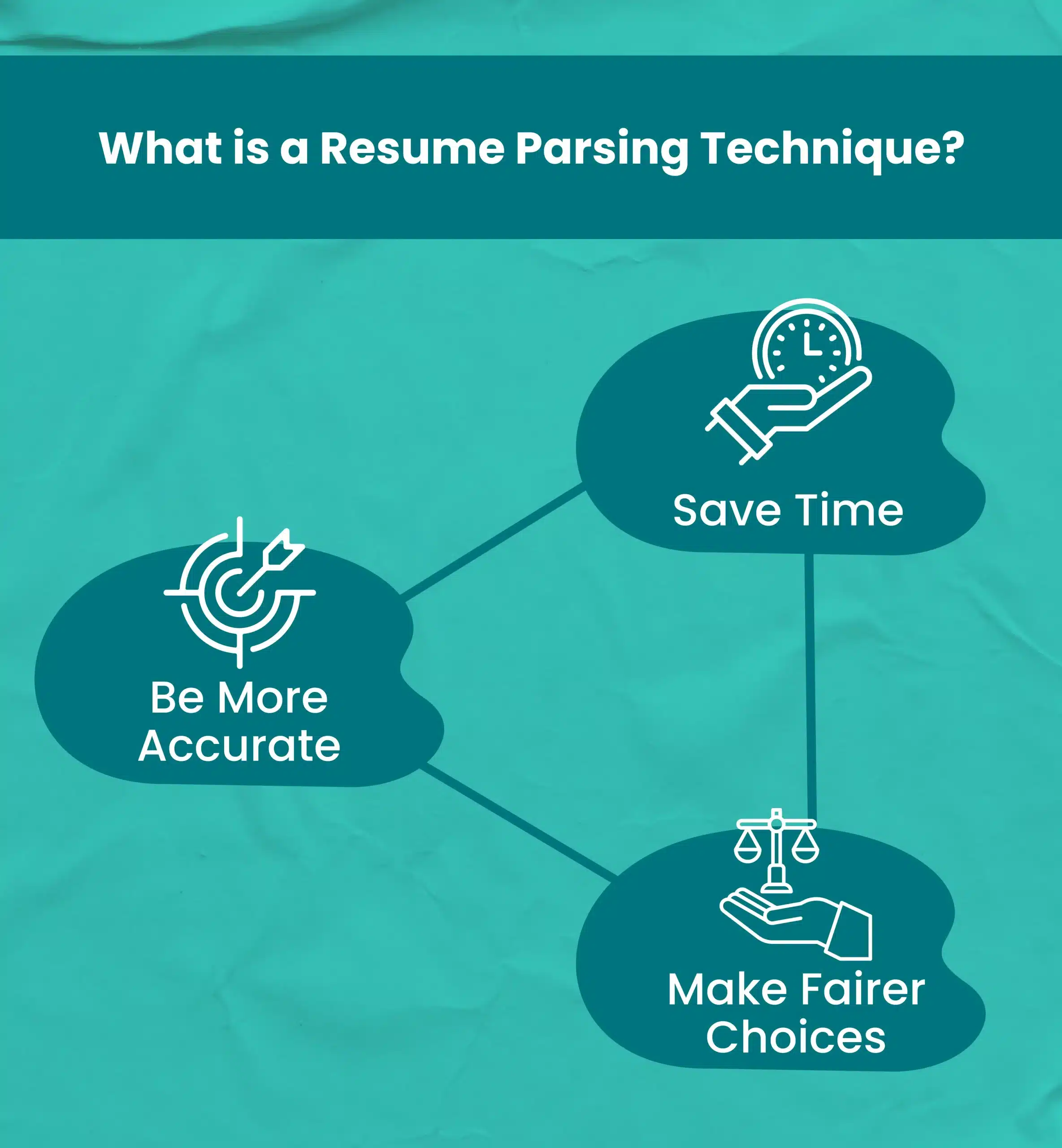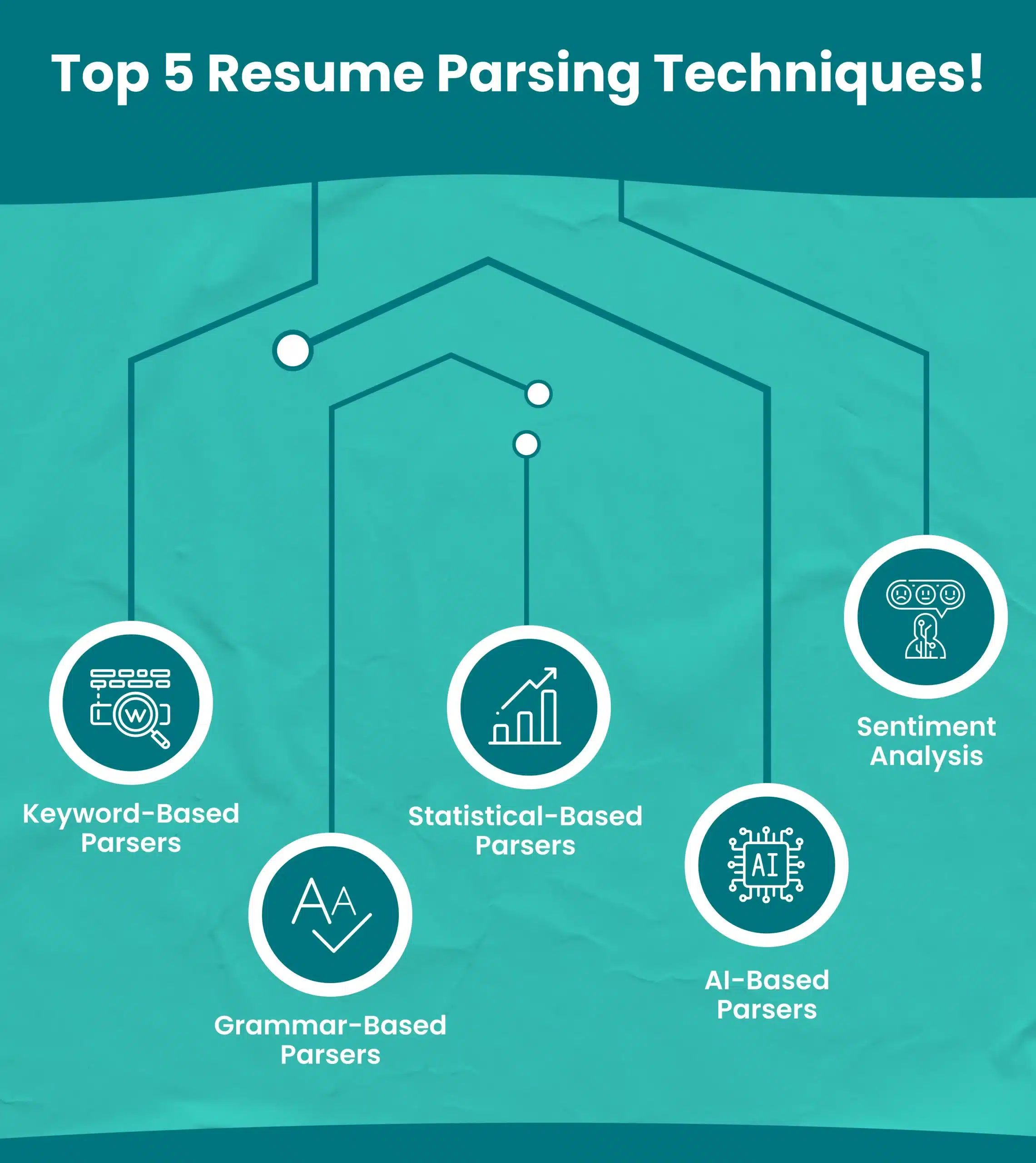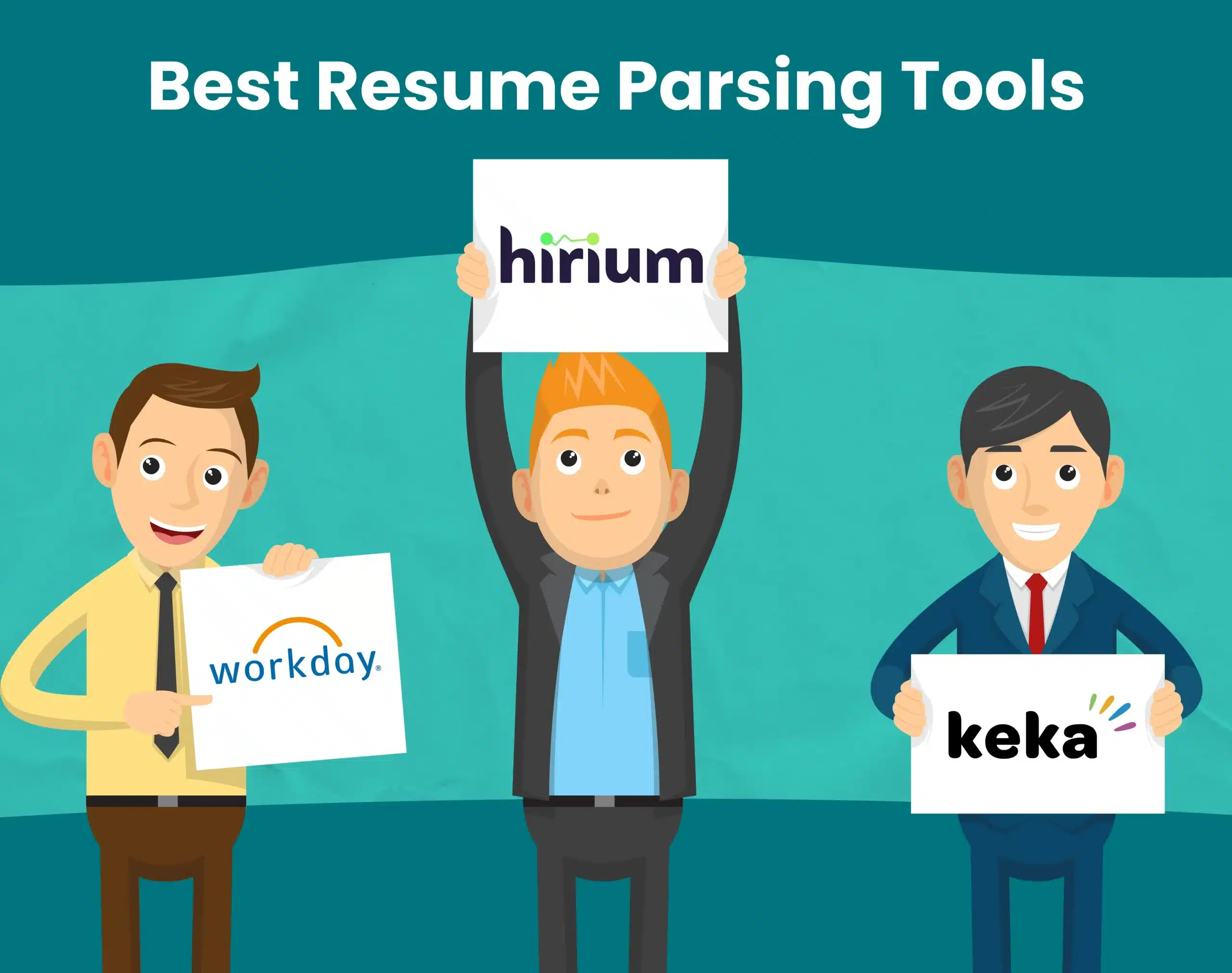Table of content
The traditional approach often forces recruiters to choose between two less-than-ideal strategies: either review a limited number of resumes with great attention to detail or look through a vast quantity, giving each only a fleeting glance. Both methods risk missing out on exceptional talent, leading to a significant loss for the organization regarding quality hires.
But what if there was a way to 3x hiring efficiency without compromising candidate quality? It’s high time to explore resume parsing techniques, a technological advancement designed to automate and refine the recruitment process.
In this blog, we will explore the top 5 techniques for resume parsing to help you improve your hiring efficiency. By utilizing automated resume screening, you can quickly navigate each resume’s complexities, extract relevant information, and make well-informed decisions.
What is a Resume Parsing Technique? Your Hiring Time-Saver!
Recruiters and HR professionals use resume parsing to analyze and extract relevant information from resumes efficiently. Hiring teams can quickly sift through large volumes of resumes with unprecedented speed and accuracy by employing these techniques.
These techniques involve using software tools that can identify and categorize different sections of a resume, such as work experience, skills, and education, making it easier to compare and evaluate candidates.
Implementing top resume parsing techniques can significantly improve hiring efficiency by:
Save Time: No more reading every single resume line by line! You can quickly see if someone has the skills and experience you seek.
Be More Accurate: Computers don’t get tired or forget things, so you can be sure you’re catching all the essential details.
Make Fairer Choices: Resume parsing helps remove bias from the process. The focus is on skills and experience, not things like formatting or fancy fonts.
Enhance Your Hiring Efficiency With Top 5 Resume Parsing Techniques!
Resume parsing techniques leverage strong algorithms to extract key information from resumes, allowing you to focus on what truly matters: building a solid team. Here’s a breakdown of the top 5 resume parsing techniques that can help you achieve 3x hiring efficiency:

Keyword-Based Parsers: Keyword-based parsers scan resumes for specific words or phrases that match the requirements of a job description. This technique allows recruiters to quickly identify relevant candidates based on the presence of key terms related to skills, experience, and qualifications.
Grammar-Based Parsers: Grammar-based parsers analyze the structure and syntax of resumes to extract meaningful information. By understanding the grammatical rules and patterns within the text, these parsers can identify different sections such as education, work experience, and skills, facilitating easier categorization of candidate data.
Statistical-Based Parsers: Statistical-based parsers utilize statistical models to analyze and interpret the content of resumes. These parsers can identify trends, correlations, and probabilities within the text to extract pertinent details about a candidate’s background and suitability for a role.
AI-Based Parsers: AI-based parsers leverage artificial intelligence and machine learning algorithms to process and understand resume data. By continuously learning from large volumes of resumes, these parsers can improve their accuracy in identifying relevant information and easily filter unqualified candidates.
Sentiment Analysis: Sentiment analysis involves assessing the emotional tone and context of resume language. This technique can help recruiters gauge a candidate’s attitude, personality, and communication style, providing additional insights beyond traditional qualifications and experiences.
These resume parsing techniques are crucial in enhancing hiring efficiency by automating the initial stages of candidate evaluation. This enables recruiters to focus on engaging with the most promising candidates.
Note: You can consider reading our blog discussing how to screen candidates effectively. It will help you filter the best candidates for your team.
Best Resume Parsing Tools (Recommendation)!
Resumes can pile up fast, making it hard to find the qualifications you need. But worry not! Several Applicant Tracking Systems (ATS) offer powerful resume parsing features to streamline your hiring process. Here’s a look at some of the best:
Hirium
- Automatic Resume Sorting: Hirium reads through applications and automatically identifies the essential details. No more spending hours sifting through papers!
- Find the Right Skills, Fast: Tell Hirium what skills you’re looking for, and it will highlight candidates who have them. It’s like a magical search function for resumes!
- Match the Perfect Candidate: Resumes can be everywhere, but Hirium sorts through the mess. It organizes information clearly, making it easy to compare candidates side-by-side.
- Focus on What Matters: With Hirium doing the pre-screening, you can spend more time interviewing the best people for the job. It’s all about finding the perfect fit!
Workday
- Intelligent Skills Parsing: Workday’s resume parsing goes beyond keywords, using advanced algorithms to understand and categorize skills and experience.
- Seamless Integration: The parsing features integrate seamlessly with Workday’s broader talent management platform, allowing for a smooth workflow.
- Customizable Matching: Tailor your candidate filtering based on specific criteria and company needs.
- Data-Driven Decisions: Generate insightful reports to identify skill gaps and improve your talent acquisition strategy.
Keka
- AI-Powered Parsing: Keka leverages artificial intelligence to analyze resumes with exceptional accuracy, even for complex or unique formatting styles.
- Multilingual Support: Source and evaluate candidates from a global pool with Keka’s multilingual parsing capabilities.
- Real-Time Collaboration: Collaborate with colleagues and share candidate insights efficiently within Keka’s platform.
- Candidate Engagement Tools: Streamline communication with top prospects through integrated messaging and scheduling tools.
These are just a few examples, and the best choice for you will depend on your specific needs and budget. Consider factors like the volume of resumes you handle, the desired level of automation, and integration with existing HR systems.
Conclusion
Parsing techniques automate the tedious task of resume analysis and offer a lifeline to recruiters drowning in paperwork. With these cutting-edge techniques, you can save time, ensure greater accuracy, and foster a fairer, bias-free hiring process. Whether you’re searching for specific skills, analyzing linguistic nuances, or uncovering hidden talents, these techniques empower you to make well-informed decisions confidently.
So, if you’re ready to take your hiring efficiency to the next level, it’s time to adopt the transformative power of resume parsing techniques. Let’s ditch to the traditional way of operating and accommodate a future where assembling your ideal team is quicker, smarter, and more efficient than ever.



